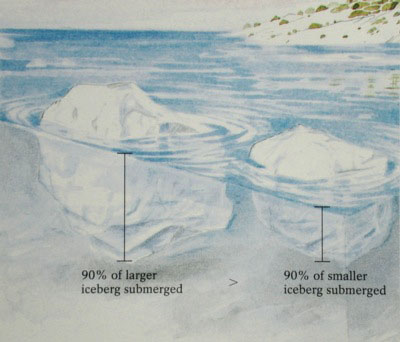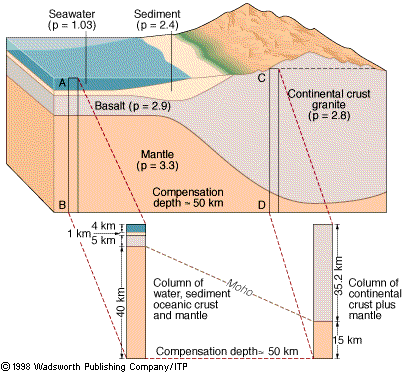| The theory of isostasy assumes that there is a depth underneath the continental crust at which the pressure related to the weight of the column of rock above does not change laterally. It is called the compensation level. The theory of isostasy has its roots in the principle of Archimedes that states that the pressure acting at the bottom surface of an immerged body (an iceberg for instance) is equal to the variation of mass related to the existence of that body.

|
Therefore surface topography which represents an excess of mass (therefore an excess of pressure) with respect to the low standing region must be compensated at depth by a deficit of mass with respect to the surrounding region. Regions of high topography such as mountain belts are therefore regions of thick continental crust. The picture below shows how the pressure at the compensation level is the same underneath two contrasted lithopheric columns.

|